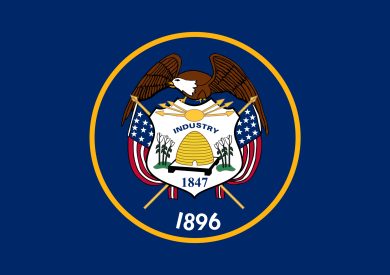
 Popular Cities For Lending in Utah
Popular Cities For Lending in Utah
In the Utah real estate market, grabbing properties before your competition is essential for making the best deals. Although real estate investors sometimes go the traditional route and seek bank loans, the process is anything but speedy.
When time is of the essence, waiting for the lengthy process of getting approval is not an option for most investors. Utah hard money lenders specialize in providing hard money loans which provide quick funds to investors. These loans are for a non owner occupied property or in some cases for business purpose loans.
Utah Hard Money Lender FAQ’S
Below are some of the most frequently asked questions we get regarding hard money loans and lenders in Utah.
What Do Utah Hard Money Lenders Specialize in?
Utah hard money lenders specialize in providing short-term, creative financing for real estate investors. If you seek a conventional lender to purchase an investment property, your loan request will be based on the property’s value and your assets. Your credit score, job, and finances will be scrutinized intensely. Hard money lenders base their final loan decisions on the after-repair value. The ARV represents the potential value of a property after all repairs have been accomplished.
What are the Benefits of Utah Hard Money Loans?
Utah hard money loans offer advantages that traditional banks cannot. Lenders like Acamnet Financial offer a higher level of flexibility than banks. When qualifying for this type of loan, lenders do not delve too deeply into the finances of real estate investors. In most cases, simply present the property and your plans, which saves you the hassle of gathering countless financial documents.
Do Utah Hard Money Lenders Look at my Credit Score?
One of the greatest benefits of working with Utah hard money lenders is the lack of credit score requirements. One of the first things a bank does is check your credit score. You can get approved for a hard money loan in Utah even if you have bad credit or poor credit, bankruptcies, and foreclosures in the past. Utah Hard money lenders primarily care about the property you are purchasing.
What is the Interest Rate & Points for Hard Money Loans in Utah?
Interest rates for hard money loans in Utah are typically higher than traditional bank loans (conventional loans) because of the greater risk lenders must take on when approving loans. When searching for a hard money lender near me in Utah, you will find average interest rate is between 8%-15%. You should also be aware that lenders sometimes charge points that are meant to offset their administrative costs. Each point represents 1% of the total loan amount. The average points lenders charge is between 1 to 3. Some lenders may charge up to 10 points. These points are due upfront or at closing, depending on the lender.
What Should I Look for in an Utah Hard Money Lender?
There are many benefits to working with an Utah hard money lender. You just need to make sure you are working with the right lender. You can rely on Acamnet Financial Group when you need us most. We offer reliability, consistency, experience, and support. As a real estate investor, you know the importance of grabbing the best property deals when they become available.
How can Hard Money Lenders in Utah Help Me?
Whether you are new to real estate and real estate projects or an old pro, you know having the capital to purchase real estate is essential. Without funds, you will miss out on real estate transactions. When you partner with hard money lenders in Utah, you will quickly get the money you need without jumping through the hoops of traditional bank lenders.
How do I get a Hard Money Loan in Utah?
When you want a hard money loan in Utah, begin by preparing the property information. Location, size, purchase price, after repair value, repair costs, etc. In most cases, the financing will be based on these numbers. Then, apply for a hard money loan in Utah using this information and supply some financial information. Then, an appraisal will be ordered to assess the loan-to-value ratio, which will influence the loan amount.
How do I Refinance an Utah Hard Money Loan?
Refinance an Utah hard money loan will involve moving from a high interest, short term loan to a longer term, usually lower interest rate loan. Typically a conventional type of loan. When refinancing an Utah hard money loan you will find it will have a more stringent set of guidelines. You will need to have sufficient credit and income qualifications. As the lending landscaping and regulations constantly change, you want to consult a knowledgeable conventional loan expert.

Current Real Estate Trends In Utah (2024)
Real Estate Trends in Utah have been experiencing a noticeable decrease in both closed sales and median sales prices. Year-over-year, the state has seen a 19.3% decline in closed sales and a 9.3% decrease in median sales prices.
Salt Lake County, a major county in Utah, has also experienced a 23.1% dip in closed sales and a 4.5% reduction in median sales prices, which mirrors the overall statewide data.
This downturn is due to rapid population and job growth, leading to high competition in the housing market. As a result, the availability of single-family homes is scarce, making it difficult for first-time homebuyers to purchase a property.
In addition, the effect of interest rates and lack of affordable housing are major issues in the Utah housing market. Despite the challenges, the housing market in Utah shows its resilience, but the problems of affordability and inventory levels are still to be addressed.
Housing Market Report
The housing market report offers an overview of the current trends and figures in Utah’s housing market. It highlights the decrease in closed sales and median sales prices across Utah and Salt Lake County. This data-driven analysis provides valuable insights into the current state of the housing market in Utah, and examines the effect of supply and demand on the cost and availability of homes.
This report looks at various factors, such as the drop in closed sales and median sales prices, to gain an understanding of the current housing market. It also evaluates the influence of the supply and demand dynamics on the affordability and accessibility of homes in Utah.
Overall, the analysis of the housing market in Utah provides valuable insights into the current state of the market. It gives an indication of the current trends, and provides a valuable understanding of the factors influencing the accessibility and affordability of homes in Utah.
Statewide Trends
In Utah, the housing market has experienced a significant drop in closed sales and median sales prices, signaling a change in the state’s real estate climate.
Year-to-date, closed sales in Utah have decreased by nearly 23%, with Salt Lake County experiencing a 25% decline.
The median sales price in the state has dropped by nearly 9% to $475,000, with Salt Lake County seeing a 6% decrease.
This shift in supply and demand could have a substantial effect on the affordability and availability of homes in Utah.
Supply and Demand Dynamics
The Utah housing market has experienced various changes in recent years. Different counties have seen fluctuating closed sales and median sales prices. Generally, the data shows a decrease in closed sales and median sales prices across the state.
Salt Lake County has not been an exception, with a noticeable decrease in both closed sales and median sales prices.
Sources
https://www.noradarealestate.com/blog/salt-lake-city-real-estate/
https://www.windermere.com/market-update/utah
https://www.houzeo.com/blog/utah-real-estate-market/

All About Utah
In the Western United States, Utah is a landlocked state bordered by Colorado, Wyoming, Idaho, Arizona, Nevada, and a corner of New Mexico.
It is geographically divided into two main areas: the Wasatch Front and Washington County.
With a history dating back thousands of years, Utah has been inhabited by various indigenous groups such as the ancient Puebloans, Navajo, and Ute.
After the Mexican–American War in 1848, Utah became part of the Utah Territory. Still, its admission as a state was delayed until 1896 due to conflicts between Mormons and the federal government.
The influence of the LDS Church is significant, with slightly over half of the population being Mormons.
Utah’s economy is diversified, encompassing transportation, education, information technology, and mining sectors.
The state’s name derives from the Ute tribe and maintains a notable Native American presence.
Utah faces challenges related to climate change and water security, including droughts and the need for sustainable water management.
Geography
Utah’s geography is characterized by its diverse landscapes, including the Great Basin, the Wasatch Front, and Washington County, making it a fascinating state to explore.
The western half of Utah lies in the Great Basin, a vast desert region known for its arid climate and sagebrush plains.
The eastern portion of the state is dominated by the Wasatch Front, a mountain range that stretches north-south along the state’s crowded corridor. This region is home to Utah’s largest cities, including Salt Lake City.
Washington County, located in the state’s southwestern corner, features unique red rock formations and is known for its scenic beauty.
Utah’s varied geography offers a range of outdoor recreational opportunities, from hiking and skiing in the mountains to exploring national parks and monuments.
Transitioning to the next section on Utah’s history, the state’s geography has significantly shaped its settlement and development.
History
The history of the region now known as Utah is marked by the arrival of various indigenous groups, Spanish explorers, and, ultimately, the settlement of Mormon pioneers in the mid-19th century.
Indigenous groups such as the ancient Puebloans, Navajo, and Ute inhabited the area for thousands of years before the arrival of Europeans.
The Spanish were the first Europeans to explore the region in the mid-16th century, followed by trappers and fur traders in the early 19th century.
However, the arrival of Mormon pioneers led by Brigham Young in 1847 had the most significant impact on Utah’s history.
These pioneers saw Utah as a place where they could practice their religion freely and established numerous settlements throughout the region.
This marked the beginning of the strong influence of the LDS Church on Utah’s culture, politics, and daily life.
Transitioning into the subsequent section, religion plays a significant role in Utah’s society.
Religion
Religion in the state of Utah has a significant impact on various aspects of society, including culture, politics, and daily life. Slightly over half of all Utahns are Mormons, with the majority being members of the LDS Church. This religious affiliation dramatically influences Utahn culture and plays a central role in shaping societal norms and values.
The LDS Church has a strong presence in Utah and is involved in various community activities, including welfare programs and humanitarian efforts. Additionally, the church’s teachings and principles often inform political debates and decisions in the state.
Despite the dominant presence of the LDS Church, Utah has also become more religiously diverse in recent decades, with a growing number of non-Mormon religious communities and a significant secular population. This religious diversity adds to the complexity and richness of Utah’s social fabric.
Transitioning to the economy, Utah’s highly diversified economy is driven by various sectors such as transportation, education, information technology, and mining.
Economy
Diversification of the economy in Utah has led to the growth of significant sectors such as transportation, education, information technology, and mining.
The state’s transportation sector is thriving, with a well-developed infrastructure that includes highways, railways, and airports.
Utah is home to several prominent universities and colleges, making education a significant economic contributor.
The state has also seen a rise in the information technology industry, with numerous tech companies establishing a presence in Utah.
Lastly, mining plays a crucial role in Utah’s economy, with the state being rich in mineral resources such as copper, gold, and silver.
This diversification has helped Utah maintain steady economic growth and attract businesses from various sectors.
Transitioning into the next section about ‘etymology,’ it is interesting to explore the origins of the name ‘Utah’ and its significance in the state’s history.
Etymology
Etymology sheds light on the origins and meaning of the name ‘Utah,’ providing insight into the historical and cultural significance of the state’s name.
The name ‘Utah’ is commonly believed to derive from the Ute tribe, meaning ‘people of the mountains.’ However, there is no such word in the Ute language, and the Ute people refer to themselves as ‘Noochee.’
The meaning of ‘Utes’ as the mountain people is attributed to the neighboring Pueblo Indians and the Apache word ‘Yuttahih.’ In Spanish, it was pronounced ‘Yuta,’ which may have influenced the adaptation as ‘Utah.’
The etymology of the name reflects the Native American presence in the region, as well as the influence of Spanish explorers and settlers.
Understanding the etymology of ‘Utah’ provides a glimpse into the state’s diverse cultural and historical tapestry.


 Popular Cities For Lending in Utah
Popular Cities For Lending in Utah